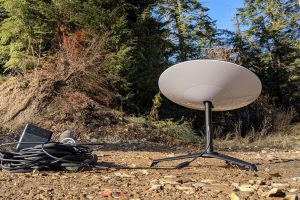Key Points
- 🌋 Elon Musk’s Starlink satellite internet system is being used to monitor seismic and volcanic activity at Yellowstone National Park.
- 🛰️ Starlink’s stable internet connection is invaluable for maintaining strong connections with remote sensors and equipment in Yellowstone.
- 📡 Cellular communication options have downsides, such as slowing down during peak tourist seasons, but Starlink is not affected by these issues.
- 📶 Starlink is being tested at one of the borehole stations in Yellowstone and has shown good performance so far.
- ❄️ If the tests continue to be successful, more Starlink satellite internet systems will likely be added before winter due to the difficulty of reaching remote areas during extreme weather conditions.
- 🛰️ Starlink is the largest satellite system in the world, with over 4,000 satellites in its network.
- 🚀 The continuous launch of more Starlink satellites and system optimizations will further improve the constellation over time.
Yellowstone National Park Harnesses Starlink Satellite Internet for Seismic and Volcanic Monitoring
The implementation of Elon Musk’s Starlink satellite internet system proves instrumental in monitoring seismic and volcanic activity at Yellowstone National Park. With a significant portion of GPS devices, seismometers, tiltmeters, and temperature sensors strategically positioned in remote areas to mitigate environmental and visitor disturbances, a reliable internet connection is crucial for their optimal performance. Starlink’s ability to provide stable connectivity to these remote locations is invaluable to ensure the uninterrupted functionality of these essential monitoring instruments.
“EarthScope Consortium administers a network of GPS and borehole strainmeter and seismometer instruments within the park. These instruments depend on a strong communications network to keep data streaming and contribute to monitoring of earthquake, volcanic, and hydrothermal activity in the Yellowstone region,” the Yellowstone Volcano Observatory wrote in a blog post.
As noted in the blog post, radio and cellular communication options for monitoring stations at Yellowstone have downsides. Cellular service, for example, could slow down during peak tourist seasons. Satellite-based solutions such as Starlink do not have this weakness, as they function well as long as they have access to the open sky. With this in mind, Starlink is now being tested to help decrease the use of cellular networks.
A Starlink system was set up in May at one of the borehole stations between Mammoth Hot Springs and Norris Geyser Basin. So far, tests indicate that the system is performing well. If tests continue to be successful, more Starlink satellite internet systems will likely be added before the winter months. After all, remote areas around Yellowstone tend to be difficult to reach during extreme weather conditions.
With over 4,000 satellites in its network, Starlink is the largest satellite system in the world. And thanks to optimizations to the system itself and the continuous launch of more Starlink satellites, the constellation would likely only get better with time.





